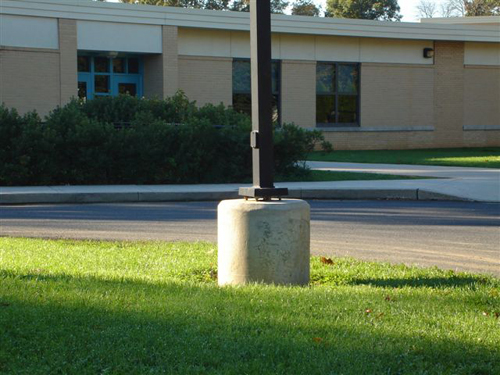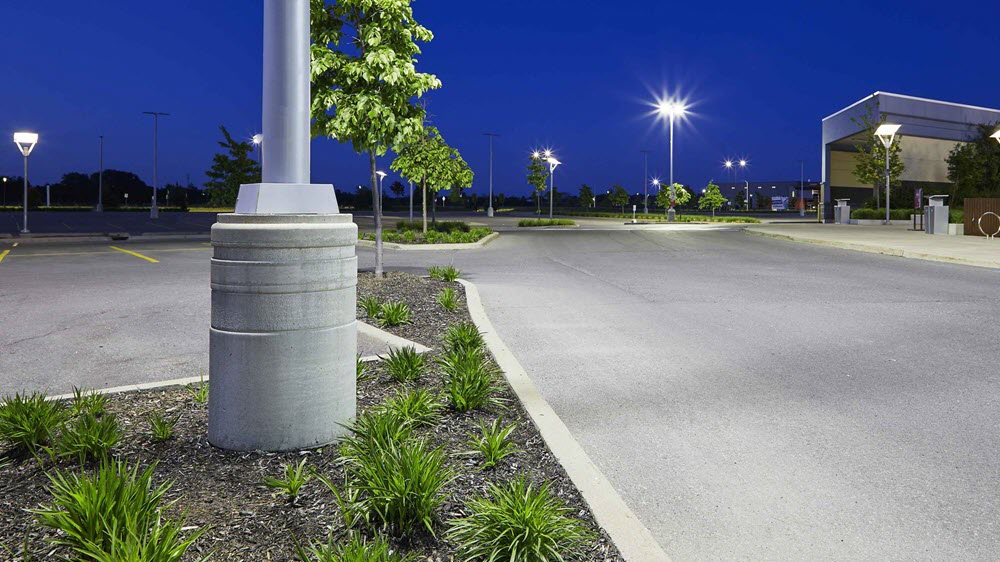Flood Light Base Servicesin Clay Township MI
Comprehensive Flood Light Installation for Enhanced Safety
We Are Locally Owned & Operated For Over 37 Years
Contact Us Today!
We Serve Businesses In And Around The Following Cities:
About Flood Light Base Services
A Definitive Guide to Flood Light Bases in Commercial Properties in Clay Township
Increasingly, commercial properties in Clay Township are seeking efficient and effective lighting solutions to enhance safety, visibility and aesthetics. Central to this surge in demand is the installation of flood light bases, a nifty addition to the lighting infrastructure that provides a robust and stable platform for floodlights. This guide provides an in-depth look into this crucial aspect of property lighting, touching on its process, benefits, and real-world applications in an engaging manner.
The Process of Installing Flood Light Bases
Flood light bases installation is an intricate job best suited for highly-skilled and experienced professionals like those employed at D&J Contracting. These experts initiate the process with a proper site assessment, determining the optimal placement for the bases to provide maximum illumination for the property. Skilled contractors dig strategic holes for the base, install a conduit for wiring, and then carefully place the base, ensuring it maintains a level position for highest effectiveness.
Once the flood light basin is installed, anchors are used to stabilize it. The flood light fixture is then assembled and attached securely to the base. Ultimately, a connectivity check is performed before the complete system is powered. These steps are pivotal in all complete flood light bases installations, even more in challenging locations such as Clay Township where local regulations and building codes must be adhered to for all commercial properties.
Unveiling the Benefits of Flood Light Bases
Flood light bases offer a wealth of benefits ranging from practicality to aesthetics. Best understood through real-world applications, these benefits can greatly enhance the overall appeal and functionality of a commercial property.
Stability is a standout advantage of these systems. Robust flood light basins secure floodlights against various natural phenomena such as strong winds, ensuring optimal functioning even in rough conditions that are not uncommon in Clay Township. Additionally, they offer an elevated platform for flood lights which aids in broader illumination.
Increased visibility is another vital benefit. A good example can be found in commercial parking lots around Clay Township where flood light bases have drastically improved nighttime safety and usability by providing widespread illumination. For businesses, such as warehouses that operate through the night, proper lighting reduces the risk of accidents, making flood light bases a necessary investment in employee safety and operational efficiency.
In addition, flood light bases add to property aesthetics. An evenly illuminated property appears more attractive and welcoming, indirectly reflecting on the brand image of businesses within. Also upgrading the level of perceived security, properties with flood light bases are more desirable to potential renters and buyers.
Real-World Applications in Clay Township – A Glimpse
Right here in Clay Township, you’d find numerous instances of commercial properties reaping the benefits of flood light bases. Businesses across all sectors have recognized their importance, with industries such as retail, hospitality, healthcare and logistics showcasing how these bases can dramatically improve lighting conditions and overall ambience.
In the retail sector, shopping malls and boutique stores leverage flood light bases for accentuating store fronts and enhancing display visibility during night hours. Similarly, in the hospitality industry, hotels, resorts and restaurants use them to create a warm and inviting illumination for their exteriors and landscapes.
The medical facilities and logistics companies are no different. Hospitals, ensuring good visibility at all times, have flood light bases providing stable and reliable night-time illumination, helping patients and medical staff navigate safely. Logistics and warehouses use them to ensure safe and efficient operations during the night shift.
Endorsed by D&J Contracting, one of the most trusted contractors in the region, flood light bases have proven their mettle across various application areas in Clay Township.
A Final Reflection
In conclusion, the value of flood light bases for commercial properties in Clay Township can not be overstated. They enhance visibility, improve aesthetics, provide stability and contribute to overall safety. With exceptional real-world applications and benefits, they have firmly positioned themselves as an essential aspect of commercial lighting solutions.
Choosing the right professionals for the installation is paramount, which is where the expertise of D&J Contracting comes into play. With their knowledge, skills, and experience, they ensure the installation process is seamless, efficient, and in adherence with all local regulations. So, if you’re considering illuminating your property, don’t hesitate to get in touch with these excellent professionals for efficient and satisfactory service that aligns with your unique needs.
Flood Light Base Services Gallery


Call Us Today to receive your Free Quote for
Flood Light Bases in Clay Township
Serving: Clay Township, Michigan

About Clay Township, Michigan
The area was first settled by John Martin in 1805, and the area was originally referred to as Pointe du Chene (Oak Point). In 1826, the area was organized as Plainfield Township, which was named by early settler John K. Smith after his hometown of Plainfield, Vermont. A post office named Plainfield began operating here on April 5, 1826 with Smith serving as the first postmaster. In 1828, the township was reorganized and renamed after attorney and statesman Henry Clay, and the post office was later renamed Clay on December 23, 1835; Smith continued serving as postmaster. The post office was renamed Algonac on August 17, 1843. Algonac incorporated as a village within Clay Township in 1867. The village gained autonomy from the township when it incorporated as a city in 1967.
- Colony Tower Complex
- Harsen House
- LeRoy Smith House
- North Channel Shooting Club
- St. Clair River Informational Designation
- Stewart Farm / Memoir of Aura Stewart
- St. Clair Flats Front and Rear Range Light
According to the U.S. Census Bureau, the township has a total area of 82.47 square miles (213.60 km), of which 35.32 square miles (91.48 km) is land and 47.15 square miles (122.12 km) (57.17%) is water.
The township contains a large portion of water that includes areas along the St. Clair River mouth in the northern Anchor Bay area of Lake St. Clair, which contains numerous channels and canals. Directly across the river is the Walpole Island First Nation in Ontario, which is accessible via the Walpole–Algonac Ferry in downtown Algonac.
The St. Clair Flats State Wildlife Area and the majority of the St. John’s Marsh State Wildlife Area are located within Clay Township. Most of Algonac State Park is located within Clay Township with a small portion extending north into Cottrellville Township.
- Bedore is an unincorporated community located along the southern coast of Harsens Island at 42°33′28″N 82°36′47″W / 42.5578126°N 82.6129630°W.
- Clays Landing is an unincorporated community located at the southern terminus of M-154 on Harsens Island at 42°33′06″N 82°36′16″W / 42.5517016°N 82.6043512°W.
- Forster is an unincorporated community located just west of Bedore at 42°33′40″N 82°37′06″W / 42.5611459°N 82.6182410°W.
- Grand Pointe is an unincorporated community located in the northeastern area of Harsens Island at 42°35′58″N 82°32′43″W / 42.5994788°N 82.5451844°W. The affluent community was settled as early as 1888 by the Grand Pointe Improvement Company, and a post office operated briefly from October 16, 1889 until January 5, 1892.
- Harsens Island is the name of the post office that serves the island and several surrounding islands. Harsens Island was first settled as early as 1779 by James Harsen, who was the area’s first white settler. By 1783, Harsen had purchased the entire island from its native Indian population. As late as 1809, the island was also known as James (also Jacob or Jacobus) Island. The post office began operating under the name Sans Souci on April 24, 1900 and was renamed Harsens Island on December 31, 1960. The post office uses the 48028 ZIP Code.
- Maple Leaf is an unincorporated community located on Harsens Island just southwest of the community of Sans Souci at 42°34′41″N 82°34′11″W / 42.5780902°N 82.5696288°W.
- Miller is an unincorporated community located near the southernmost end of Harsens Island at the end of public road access at 42°32′57″N 82°39′32″W / 42.5492017°N 82.6587976°W.
- Muirs is an unincorporated community located along M-154 on Harsens Island at 42°33′23″N 82°35′14″W / 42.5564238°N 82.5871285°W.
- Pearl Beach is an unincorporated community and census-designated place (CDP) located along the southern end of the mainland at 42°37′36″N 82°35′52″W / 42.6267006°N 82.5976876°W.
- Perch Point is an unincorporated community located along M-29 in the northwestern portion of the township along the border with Ira Township at 42°39′54″N 82°37′13″W / 42.6650333°N 82.6201900°W.
- Pointe aux Tremble is an unincorporated community located along M-29 within the Pearl Beach CDP at 42°37′17″N 82°34′16″W / 42.6214230°N 82.5710196°W. The community was settled in 1904 as a station along the railway about 3.0 miles (4.8 km) west of Algonac.
- Riverside is an unincorporated community located in the southern portion of Harsens Island at 42°33′32″N 82°37′49″W / 42.5589237°N 82.6301859°W.
- Roberts Landing is an unincorporated community located along M-29 near Algonac State Park along the border with Cottrellville Township at 42°39′35″N 82°30′57″W / 42.6597561°N 82.5157415°W. The community was named after its first settler, who arrived here in 1830. The Roberts family settled the area as a popular fishing and hunting destination. A post office operated here from April 29, 1869 until December 15, 1895.
- Sans Souci is an unincorporated community located on Harsens Island at 42°34′52″N 82°33′44″W / 42.5811490°N 82.5621580°W.
As of the census of 2000, there were 9,822 people, 3,934 households, and 2,844 families residing in the township. The population density was 277.0 inhabitants per square mile (107.0/km). There were 5,325 housing units at an average density of 150.2 per square mile (58.0/km). The racial makeup of the township was 97.92% White, 0.20% African American, 0.68% Native American, 0.11% Asian, 0.21% from other races, and 0.87% from two or more races. Hispanic or Latino of any race were 0.85% of the population.
There were 3,934 households, out of which 27.9% had children under the age of 18 living with them, 61.3% were married couples living together, 7.0% had a female householder with no husband present, and 27.7% were non-families. 22.9% of all households were made up of individuals, and 9.2% had someone living alone who was 65 years of age or older. The average household size was 2.50 and the average family size was 2.94.
In the township the population was spread out, with 22.6% under the age of 18, 6.5% from 18 to 24, 28.2% from 25 to 44, 28.8% from 45 to 64, and 13.9% who were 65 years of age or older. The median age was 41 years. For every 100 females, there were 103.6 males. For every 100 females age 18 and over, there were 103.2 males.
The median income for a household in the township was $55,059, and the median income for a family was $63,182. Males had a median income of $48,053 versus $31,923 for females. The per capita income for the township was $27,169. About 2.3% of families and 4.7% of the population were below the poverty line, including 6.7% of those under age 18 and 3.6% of those age 65 or over.
Call Us Today to receive your Free Quote for
Flood Light Bases in Clay Township
Related Services in Clay Township, Michigan
We Serve Businesses In The Following Zip Codes:
48007, 48015, 48021, 48026, 48035, 48036, 48038, 48042, 48043, 48044, 48045, 48046, 48047, 48048, 48050, 48051, 48066, 48071, 48080, 48081, 48082, 48083, 48084, 48085, 48088, 48089, 48090, 48091, 48092, 48093, 48098, 48099, 48225, 48230, 48236, 48310, 48311, 48312, 48313, 48314, 48315, 48316, 48317, 48318, 48397